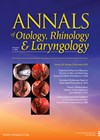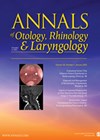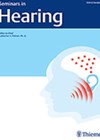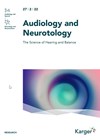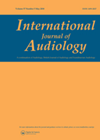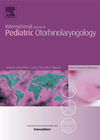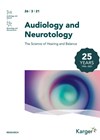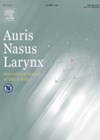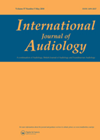
Journal Reviews
Newborn sensorineural hearing loss – what is the incidence?
In the last two decades, the introduction of newborn screening for hearing loss has dramatically lowered the average age of newborn hearing loss diagnosis to around two to three months of age. The benefits of early diagnosis are manifold, enabling...
Sudden sensorineural hearing loss – who will get better?
Idiopathic sudden sensorineural hearing loss (ISSNHL) is a rare but potentially devastating condition. For patients presenting with this condition, prognosis is of paramount importance. Wu et al begin to address this issue by retrospectively studying 17 potential prognostic factors for...
What is trendy?
This edition of Seminars in Hearing focused on the results from the MarkeTrak 2022. Now, the relevance to the UK market might be slight limited with some of the data but there are certainly a few interesting nuggets for our...
It is all so COSI…
Something which we have realised for a long time in the UK is the importance of the clinician in the assessment and long-term adoption of hearing aids. This common sense article outlines the need for more individualised patient pathways, thinking...
Steroid use in acute acoustic trauma
Acute acoustic trauma (AAT) injuries include noise-induced damage to inner and middle ear presenting as hearing loss, tinnitus and vertigo. Classic presentation is sensorineural hearing loss with an intact tympanic membrane. The authors carried out a case-control study in military...
Assessment of audiological needs
A thorough assessment of audiological needs is crucial for a successful audiological rehabilitation. This study concentrated on creating the Québec Audiological Assessment Protocol for Younger and Older Adults (QAAP-YOA) that could be easily adopted in audiological clinics. The authors used...
Loudness in non-organic hearing loss
Non-organic hearing loss has been of interest to researchers for a long time. In this study the authors compared a loudness rating measured in relation to the sound level for 1000 Hz in normal hearing patients and patients diagnosed with...
Cochlear implantation in asymmetric hearing loss
Criteria for cochlear implantation (CI) is a constant topic of debate. The UK traditionally had relatively restrictive guidance, although this has been greatly improved by more recent guidance released in 2019. Nevertheless, because of the lack of evidence for cost-effectiveness,...
Robotic insertion of electrode array in cochlear implantation
Cochlear implants (CIs) are commonly used for profound bilateral hearing loss. They have specific national guidance for their insertion, however patients with a substantial residual acoustic hearing are potential CI candidates. Preservation of this residual hearing can be sought with...
Do personal listening devices cause cochlear synaptopathy?
Cochlear synaptopathy is a condition in which noise interrupts the synaptic communication between sensory inner hair cells and low spontaneous rate cochlear nerve fibres. Since these nerve fibres are associated with signal coding in noisy backgrounds, their disruption leads to...
Algorithms to diagnose NIHL
Finding an efficient diagnostic tool for noise-induced hearing loss (NIHL) has been of research interest for a long time. There are several algorithms that compare expected age-related deterioration of hearing with the actual audiogram. This study aimed to compare a...
Further understanding of GJB2 hearing loss
For many years, hearing loss has been an area which has attracted the interest of clinical and academic geneticists. Genetic testing for severe-profound hearing loss is now commonplace in many healthcare systems. Understanding the genetics of hearing loss has improved...

